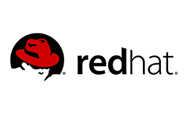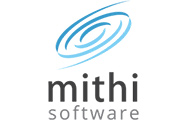Advantages of Red Hat Service Management and Automation Certification Training
₹ 2,50,000+
Average Salary per Annum in India
$ 50,000
Average Salary per Annum in USA
15,00,000
Job Vacancies across the world
WHY CHOOSE REDHAT SERVICE MANAGEMENT AND AUTOMATION CERTIFICATION TRAINING?
Successful career comes in many ways and with Red Hat, there is no deficiency of it. Enter the IT sector with confidence when you complete your Service Management through Ansible (Rh358) training and certification from Grras Solutions. Learn everything about the topic from expert trainers and practice on live projects under the professional guidance of those who know the best in the field. When you join Grras Solutions, you can be certain to get access to nothing but the absolute best for your future endeavours. At Grras, you will learn how to manage network services, configuring network interface, and automating service and network interface configuration, among multiple other things. With all this knowledge at the back of your hands, you will feel added boost to your confidence.
Register NowAbout Redhat Service Management and Automation Certification Training
Service Management and Automation Course Overview
| Tracks | Regular Track | Full day (Fastrack ) |
|---|---|---|
| Training Duration | 60 hours | 60 hours |
| Training Days | 30 days | 7 days |
1.Rhcsa
2.Rhce ansible
3.Rhce servers
System and server admins:
You will have the opportunity to handle the services that a company provides to users of technology product and services.They can troubleshoot the problems occuring at the same time.
System engineer:
You will be managing and monitoring the installed RedHat linux OS and it's infrastructure.You will be responsible for installation, configuration and management of all linux servers in an organisation.
Linux system admins (L1/L2 engineer):
A person handles the Redhat linux servers of the company,manages and troubleshoots the problems occuring. At the same time uses Ansible tool for Automation for doing operational works and tasks easily.

Enrollment For Service Management and Automation Course
Job Oriented Program
Our Job Oriented Program is one of a kind and a unique program that offers you 100% job guarantee right after completing the certification program and training with us. It is one of our renowned programs for producing job ready and experienced candidates with apt technical and soft skill knowledge demanded in the prompt evolving IT and digital industries.
Apply NowFREQUENTLY ASKED QUESTIONS
What is Red Hat Service Management and Automation?
Red Hat Service Management and Automation (RH358) is all about learning management and deployment of network services including Red Hat Enterprise Linux. Linux systems have an important role in the modern IT Datacenter.
What is the time duration of this (RH358) course?
Our Red Hat Service Management and Automation course duration is 60 hours.
Can I complete this (RH358) course via fast track?
Yes, you can complete this course via fast track in 7 days.
Where should I go for Red Hat Service Management and Automation course?
Grras Solution is a partner of the Red Hat enterprise. We provide quality training preparation based on RHCSA exam scenarios. Our trainers are experts and are the best fit to help you learn and grow.
What I will learn in this (RH358) course?
After this course, you will be confident in Linux system service management and deployment through Ansible training.
Why should I choose Grras Solutions for this (RH358) course?
Grras Solutions provide professional guidance to students under subject experts and trainers. We provide everything that students need to be related to this course.
Will I get job assistance in this course?
Yes, we provide job assistance with this course.
Does this course cover lifetime membership?
Yes, we provide lifetime membership. Students can revisit this course for revision purposes. We are here to help our students in their career paths.
Will I get live project assessment in this course.
Yes, students practice on live projects in Red Hat Service Management and Automation course.
How many modules will be cover in this course?
Red Hat Service Management and Automation course have 11 modules.
What are the job opportunities after completing this course?
Some job roles after completing (RH358) course include Systems and server admin, System engineer, Linux system admins, etc.
How much salary I will get after the course?
You will get an average salary of 2,50,000 in India and in the US $50,000 approximately after completing the course.
What experience is require for this course?
Students should have done RHCE (RedHat Certified Engineer) on RedHat enterprise Linux 8.
Can I take online classes for (RH358) course?
Yes, we provide both online/ offline classes for Red Hat Service Management and Automation course. Students can join according to their flexibility.
Is certification necessary in this course?
Certification is necessary for the industry to be certain of your skills and knowledge. It will be a great opportunity to grab the company's attention.
























